10 “Must Have” Plugins for Mixing Drums
Drums are always interesting to mix. Simply bringing together and balancing as many as 20 or 30 mics is an art in itself. Perhaps because of this, there seem to be more plugins made specifically for mixing drums than just about any other instrument.
Today, I’d like to parse through my favorites to give you a list of what I believe to be some of the key essential tools for drum mixing. Each of these plugins has helped take my own drum mixing game to the next level and I could barely imagine mixing without them now.
1. The Sound Radix Drum Leveler
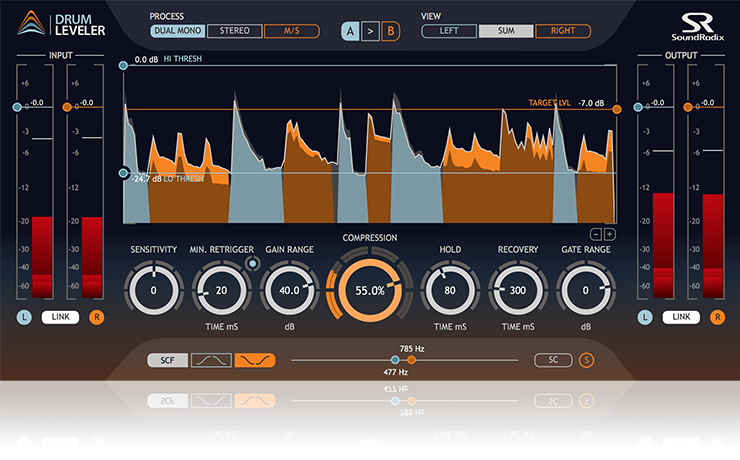
The Drum Leveler by Sound Radix provides one of the more effective takes on drum gating out there, as well as transparent dynamic range control.
Sound Radix only makes a few plugins, but each of them is truly special. Drum Leveler comes in as my first essential drum mixing plugin because it solves one of the most significant issues with live, multi-tracked drums: Bleed.
Noise gates have come and gone from my arsenal, some with more success than others. They can be frustrating enough to work with that it seems many engineers avoid them altogether, opting to work around bleed in other ways, whether by using samples, cutting dead space, or just working on optimizing their mic positioning and selection.
But there is hope. Drum Leveler has become indispensable in my drum mixing, and it may be the best, and final, gate you’ll ever need for drums. This plugin tracks hits, and cuts out all the stuff you don’t need. In every situation that I’ve used it, this plugin has delivered, and fast. The internal sidechain is custom-built for filtering out bleed, and a few helpful presets will help tailor its response for the particular kind of drum you’re working on.
Drum Leveler it’s more than just a gate, though. This plugin is also described as a “detection-based downward and upward compressor/expander”. What this means is that the plugin automatically compresses or expands individual hits to achieve a more limited dynamic range with a minimum of compression artifacts, all while respecting the natural dynamics of the performance.
In short, Drum Leveler cleans up both your drum tracks and your drummer. It can’t fake good playing, but it can take a good drum performance and make it great. Another interesting entry in this category of drum-specific gates is the Wilkinson DeBleeder. While not as flexible or powerful as the Drum Leveler, it also provides a unique take on drum gating and can currently be found for less than a third of the price.
2. A Drum Replacer, Like Slate Trigger 2
One thing Drum Leveler can’t do is fix a bad-sounding drum. Thankfully, Slate Trigger can.
Drum replacers are becoming more and more commonplace and, while a few good competitors exist, nothing comes close to Slate’s in my experience.
Trigger is a fully-featured drum replacement plugin. It allows you to load up to eight different samples and blend them however you want, along with the natural sound. You can tweak the samples further with controls for dynamics and velocity range, giving you the options to mold the sound to fit your live kit more naturally.
What I really love about Trigger is how simple it is to use. Despite being very flexible, everything makes sense within the plugin. In true Slate fashion, the important stuff is put up front while more complex options are just a few clicks away.
Despite being a “utility” plugin, this one has been essential for me in getting great and consistent-sounding mixes. To me, it’s more than just an essential drum plugin, it’s just an essential plugin in general.
When you purchase the plugin, you’ll also receive a library of Slate samples. While some may sound dated, these samples have been used on countless records, and are sure to give you some more options when blending. I end up adding Kick 7 to almost every kick I mix, even if I am blending it in with other samples to get a distinct tone each time.
All of the samples come in Slate’s proprietary TCI format. The included instrument editor will allow you to import WAV files and make your own multi-velocity samples, but one-shot WAVs can be loaded directly into the plugin as well.
Other good options include WavemachineLab’s Drumagog, Toontracks’ EZDrummer, Avid’s TL Drum Rehab and SPL’s DrumXchanger, but in my experience there is a reason that the simple and flexible Slate is winning such devoted fans with the ease-of-use and value to be found in Trigger.
3. Sound Radix Auto Align
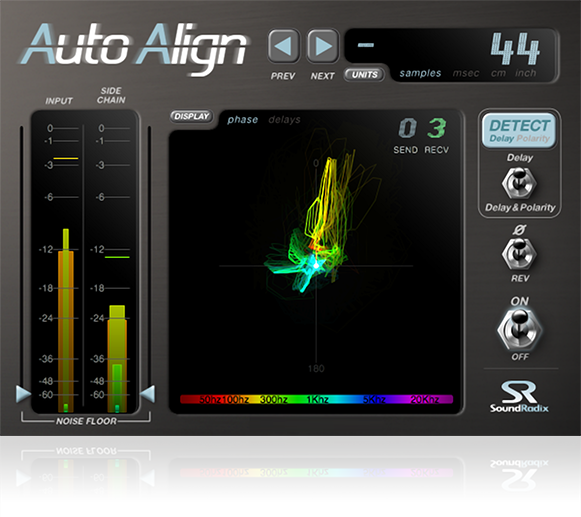
Auto Align offers a unique approach to getting drum tracks in phase with minimal effort and second-guessing.
Another great “utility” plugin for drums is Auto Align from Sound Radix.
Put it across all of your drum tracks, and let it go to work. This plugin will detect phase and timing issues and automatically adjust your tracks in real time.
This plugin is a real CPU hog that could bog down the your chain. However, with the “Commit” function now standard will all Pro Tools versions, this plugin is a dream to work with.
Before I touch my drum tracks, I usually set up Auto Align and commit the versions. That way, I can go forward knowing my drums are just about perfectly in phase.
Phase is one of the silent killers of great drum tracks. Especially for those just starting out, it can be hard to tell when something is out of phase, leading to disastrous results down the line. This plugin helps fix it at the source, and cuts out all of the labor of zooming in to line up transients when needed.
Setting up Auto Align can be a bit confusing at first. You start out by selecting a track to send a signal that all other instances of the plugin will receive. There is no particular track you must select, but I have found that using one of your overhead mics will generally work best.
After you’ve selected this master track, you’ll want to go through all of the instances of the plugin to set the noise floor. All this means is adjusting a slider so the plugin is only reacting to the transients and ignoring the ambient sound in the room. (Be careful not to set it too high, especially on spot mics.)
Hit “detect” and play through some of the song. Once the light stops blinking, the plugin is finished working and you can move on to the next instance.
If you’re relying heavily on room mics, be careful when using Auto Align on them. Much of the benefit of room mics is in the delay that comes from them, so they may not need to be included.
4. A Virtual Tape Machine like Slate VTM
Moving on to tonal shaping plugins, there is no end to tape saturation plugins available for use on drums.
UAD users have the acclaimed Studer A800 and Ampex ATR-102 to draw on, Waves offers the J37 Tape and Kramer Master Tape, and Crane Song’s Phoenix has long been a cult favorite, to name just a handful of options.
In my studio, the Slate Virtual Tape Machine has become something of a staple for all of my drum tracks. I put it across my drum bus to add a little “special something”, as well as using it on the individual tracks. I really don’t know what this plugin does, but I love it. It just makes everything sound polished.
I wouldn’t say it’s a perfect emulation of tape, but for me, that’s not the goal. This plugin is very subtle, but can make a major difference when stacked across multiple tracks.
When placed across each drum track, the overall kit just sounds more cohesive and “finished”. Experimenting with the tape type, speed, and bias will yield different results, all of which still achieve a more polished sound.
There’s another benefit to this plugin as well: Often, in modern-sounding productions, close mics are compressed like crazy to cut through a mix. What can follow are drums that “pop” a little too much. Putting this at the end of a close mic chain and driving the input will tame the peak of the transients, still giving the perception of pop and transient presence, but without it being offensive.
5. Kush Audio Electra EQ
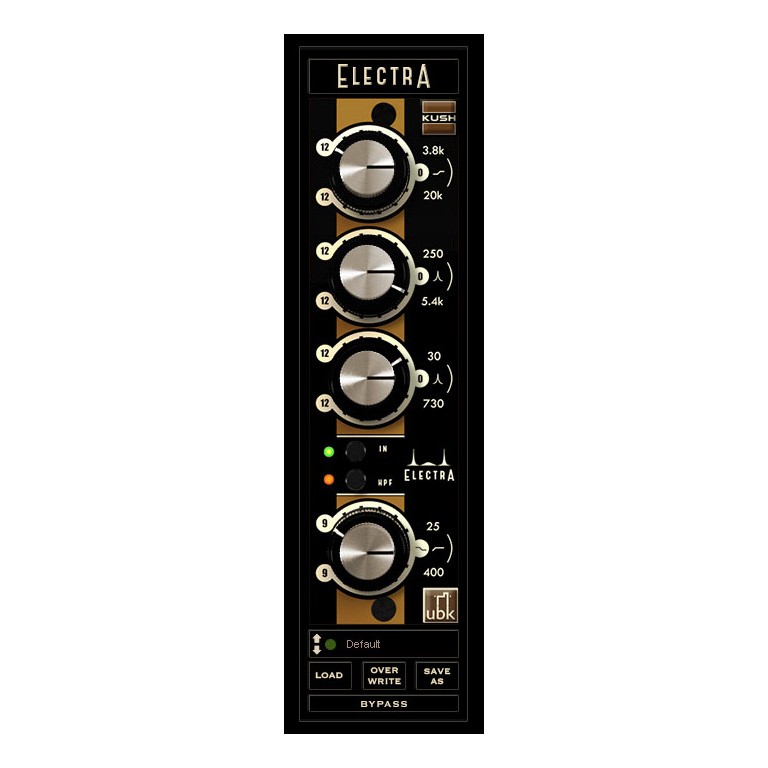
With Electra, you can apply tasty top end boosts to your heart’s content, with no pesky number readouts making you feel guilty for it.
Kush Audio is one of the most underrated plugin developers out there. I use multiple instances of their plugins on just about every mix I do, and this EQ has become no exception. Electra’s simple, three-band design lends itself to creativity, displaying no concrete numbers for frequency or gain.
In particular, the high band boost here is something special. Snare drums often need a large top-end boost, and this plugin works magic in that area. Just boost the top band, and the muddiness of the midrange melts away, leaving a bright and vibrant snare that doesn’t sound offensive.
The visual design of the EQ has something to do with its success. Because there are no concrete numbers, boosting 8dB in the high end doesn’t look like much, and may be just what a track needs. This EQ encourages that you mix with your ears and not your eyes, a battle that even seasoned engineers fight each day.
Thankfully, it’s cheap too: Kush’s relatively new subscription service provides all of their plugins for only $10 a month. This plugin alone is worth the cost, but you get the rest of their suite as well, including the wonderful Hammer Mastering and Clariphonic EQs.
6. An API 550A Plugin
Keeping with EQs, this one is another long-time staple for drum mixing, both in the box and out.
The Waves variant of this classic 500 series module does a great job for a fraction of the cost of the hardware, and Universal Audio has an official version for UAD users as well.
This three-band design has a tone very unlike the Electra—it’s much more “sharp” than “smooth”. Still, adding just a hair of top and bottom to a drum bus will make the drums suddenly come alive. I almost always find the first tick of +2dB on the top- and bottom-end can really add some sparkle and impact where needed, without sounding overdone.
I don’t always use this plugin, but it’s often saved drum tracks when I have. After blending drums in isolation, they can often feel lost, and a bit conservative in the top- and bottom-ends. Adding this plugin on at the end can fix these issues immediately, without having to dig through each chain.
That said, I wouldn’t necessarily recommend mixing into this plugin. Because it can be so extreme when pushed, it can be a little too intense and give a distorted view of the kit when placed on a drum bus. But on individual tracks, its inherent “sharpness” can work very well. A kick drum for instance, may need an extreme amount of upper midrange top-end to get the sound of the beater coming through. This plugin is great for that, and is often able to push far beyond what the Electra is capable of.
In addition to the official versions by Waves and UAD, other makers including McDSP and URS offer algorithms in their bundles that also capture the spirit of the classic API 550.
7. A Clipping Plugin like JST Clip
Moving away from EQs, there are a few minimalist, standalone clipper plugins on the market, including Event Horizon and IK Multimedia’s Classic Clipper, but for me, none holds a candle to JST Clip on drums.
Clipping, in this context, means simulating the kind of pleasant transient shaving that a good A/D or D/A converters can add to a track. Like any type of distortion, this cuts off the peak of a signal, taming those peaks instantaneously and adding attractive harmonic distortion, without you having to worry about attack and release times.
With the JST clipper, the results are drums tracks that can sound super aggressive in just the right way. It’s not the best option for every mix, but it’s a great alternative when standard compression or limiting just isn’t cutting it.
Additionally, the one knob operation is dead simple to use. Simply turn up the gain, turn down the output, and see where the drums sit. I don’t always use this on drums tracks, but when some extra aggression is needed, I almost always try it.
The added mix knob is extremely useful as well. I’ll often slam my close mics through the clipper to get the effect and then back off to around 20%. Combine this with Virtual Tape Machines on a snare, and you can add some very useful “hair” to your signal very quickly.
8. A Multiband Compressor like the FabFilter Pro MB
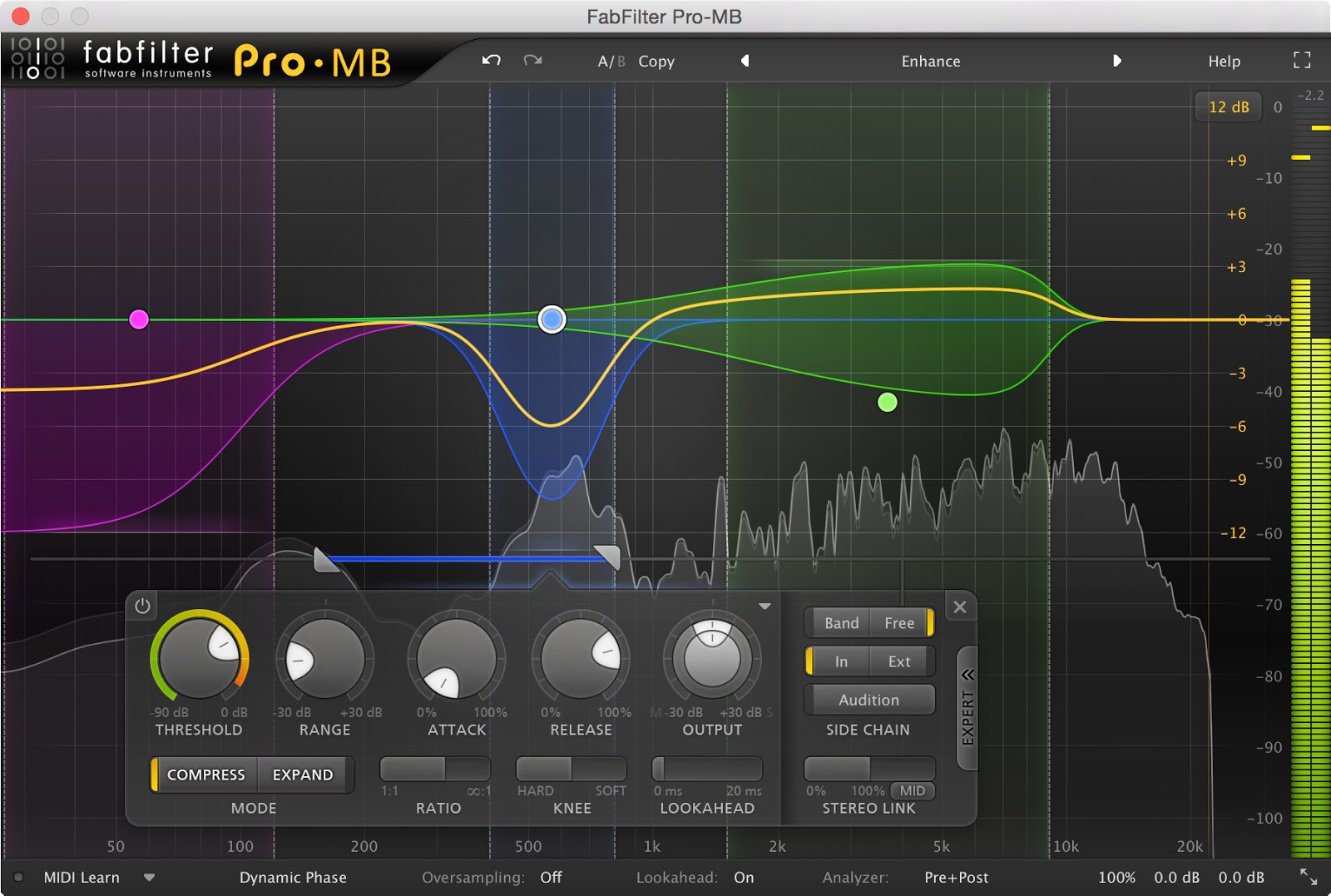
A multi-band dynamics processor can be used for taming low end imbalances, cymbal harshness, and potentially, bleed.
Multiband compression, while scary, can be a true secret weapon in mixing.
While it can be used anywhere (I implore you to explore), when it comes to mixing drums, I’ve found that multiband processing can be particularly useful on problem kick drums and overheads.
There is no shortage of excellent multiband compressors out there, and good options exist in this field from companies like iZotope, McDSP, Waves, UAD, Sonnox and Plugin Alliance, but I’ve found the FabFilter Pro MB to be one of the easiest, most flexible and cost-effective.
To quickly summarize, a multiband compressor is like having multiple compressors working together on the same source, each of them compressing a small range of the frequency spectrum independently. This allows you to compress different areas by different amounts—say by adding more compression just to the low-end of a kick drum, or adding extra control just on the upper-mids of the overheads.
I often use this to deal with the nasty frequencies of overhead tracks that stick out too much in a mix. Instead of a wide bell that dulls the excitement of the cymbals, the multi-band compressor will react to the natural dynamics of the player, and only kick in at the moments those areas get too harsh for comfort.
Surprisingly, one of the best uses I’ve found for this plugin is as a frequency-dependent gate. Taking a snare drum, for example, you can set an expansion band at the very top of the frequency spectrum, somewhere around 5kHz and up. Then, you can trigger this high frequency expander off of an internal sidechain that is set to detect the meat of the snare, somewhere in the 400Hz – 1kHz range.
This has the effect of ducking the high frequencies whenever the snare isn’t being played, and letting them come through in full whenever it is hit. This often leads to far more natural-sounding results than a hard gate, by just reducing the most offensive parts of the cymbal bleed, instead of applying a hard cut to all frequencies.
You can take this step further by then feeding the snare into Drum Leveler, giving you one of the most perfect gate combinations I’ve found, without much effort at all.
9. An SSL Bundle
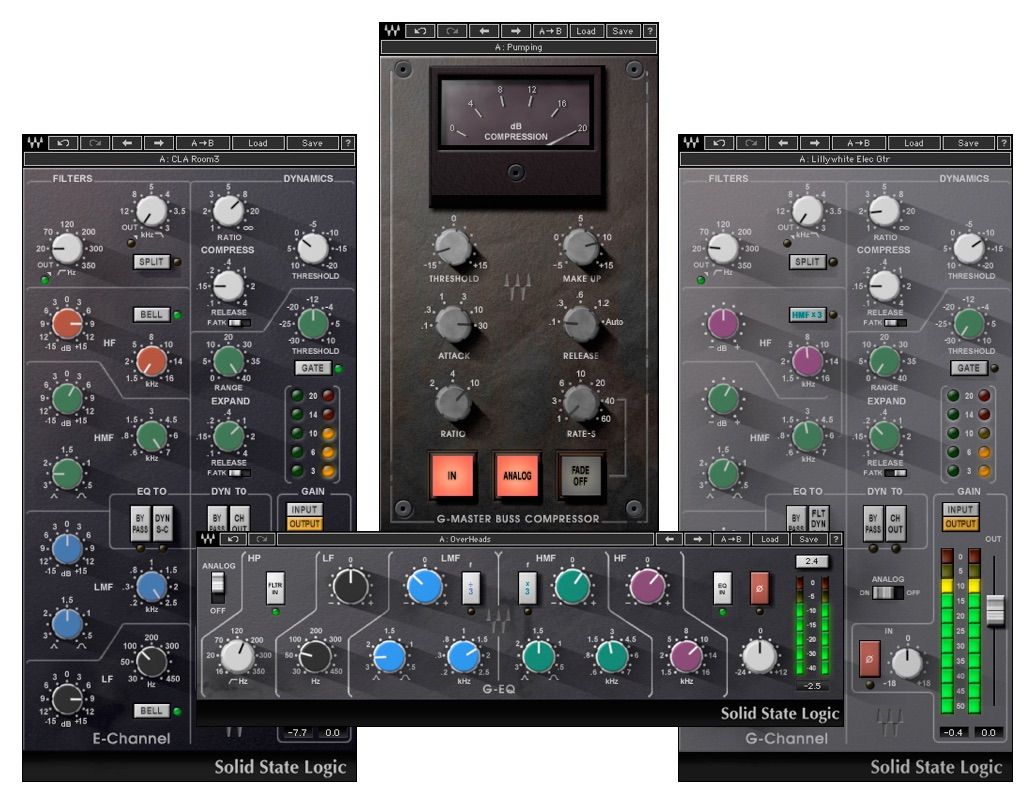
SSL emulations from like likes of UAD, Waves, Plugin Alliance, McDSP and others have become a staple of the sound popular music.
No drum mixing toolkit is complete without some kind of SSL emulation.
There are plenty of options out there, from the official versions by Waves, UAD and Softube to the bx_console series from Plugin Alliance, to bundles by PSP, URS and McDSP.
The Waves SSL bundle in particular is four amazing tools in one: Two channel strips, one EQ and one awesome compressor. If I don’t know what to reach for when mixing drums, I reach for the SSL channel strip.
Both the EQ and compressor here sound great. Putting the compressor across a drum bus with a little bit of light compression can really breathe life into drum tracks. Dancing around 2-4 dB in gain reduction, that iconic SLL compression just adds a subtle ebb and flow to the drums, especially if you time your release correctly.
Another place I often use the SSL compressor is across a “music bus”. In my routing setup, I have all of the instrumental tracks (everything expect vocals) going to one bus before hitting my mix bus. Here, I set up the compressor with the fastest attack and fastest release available and mix into it. I’m looking for snare hits to duck the compressor no more than 3 dB.
This has the effect of subtly ducking all of the other instruments when the snare hits, letting it cut through. While you can’t hear the ducking when done properly, you can still hear the payoff. In dense mixes, this makes the snare cut through just right, sitting above the mix for the initial transient and then settling back in to its spot for the sustain.
10. A Distressor Emulation
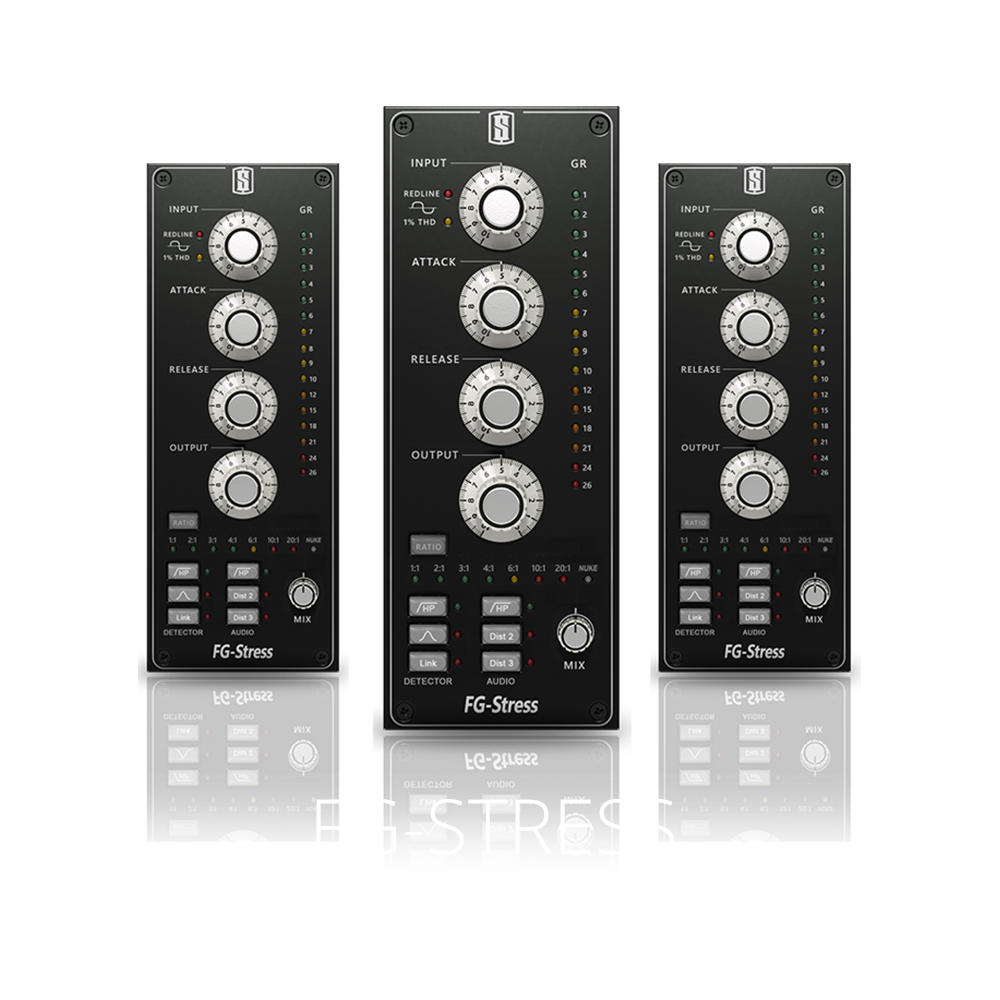
Slate’s FG Stress is a new entry in a new class of software emulations of the modern-classic Distressor compressor from Empirical Labs.
The most recent addition to Slate’s plugin subscription service, FG-Stress is one of the few plugins on the market that emulates a Distressor. If you’ve used the original hardware unit, you don’t need me to tell you that a Distressor does something special on drum tracks.
Similar options on the market include the Arousor from Empirical Labs (the original designer of the Distressor), and now, an authorized recreation from Universal Audio.
The beautiful thing about a Distressor is that it breaks the conventions of compression. For every signal, there seems to be a sweet spot, with a hair-line between too little and too much. When you find that spot (which can only be found my messing around), the compressor makes drum tracks pop in all of the right spots.
What’s nice about this plugin over the original hardware is the addition of a mix knob. For room mics in particular, I like to crush them as much as possible through FG-Stress, then mix however much I want back in with the track. It’s a feature not seen on the hardware units, making this plugin super-convenient.
Summing it Up
Of course, no list like this can ever be comprehensive. Not every plugin I often use on drums even made this list. Many come and go, but these have become some of the constants in my workflow.
While I don’t use all of these on every single track, I almost always try them, and most of the time, at least one of these plugins will work wonders. At this point, I couldn’t imagine mixing without them at hand.
Do you have some favorites of your own, specifically for mixing drums? Let us know in the comments below, and as always, thanks for reading my take.
Jacob Roach is a writer, producer, and engineer from St. Louis, Missouri.
For more great insights into both mixing and mastering, try our full-length courses with SonicScoop editor Justin Colletti, Mixing Breakthroughs and Mastering Demystified.


Please note: When you buy products through links on this page, we may earn an affiliate commission.







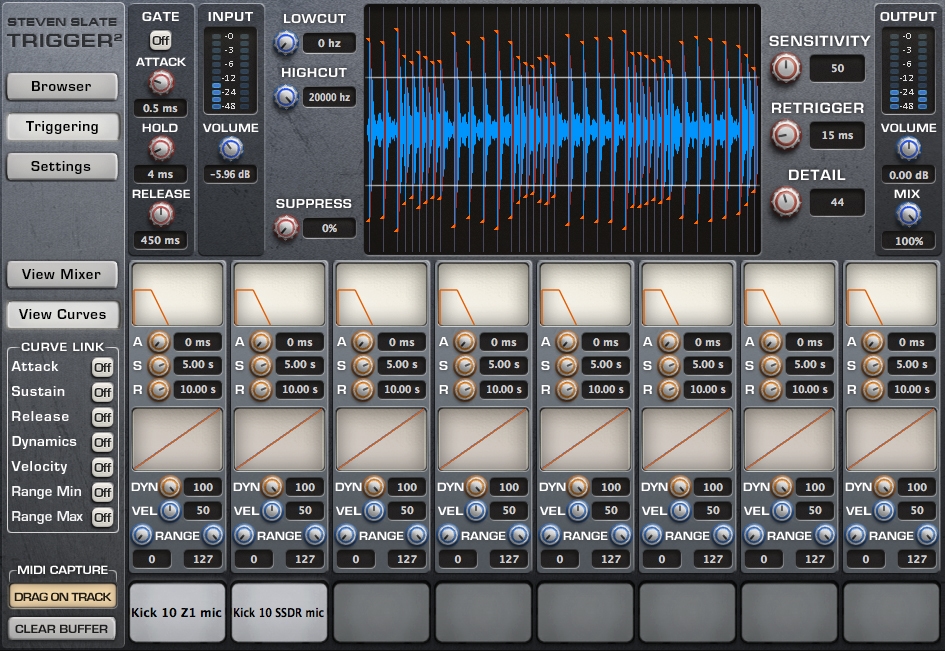

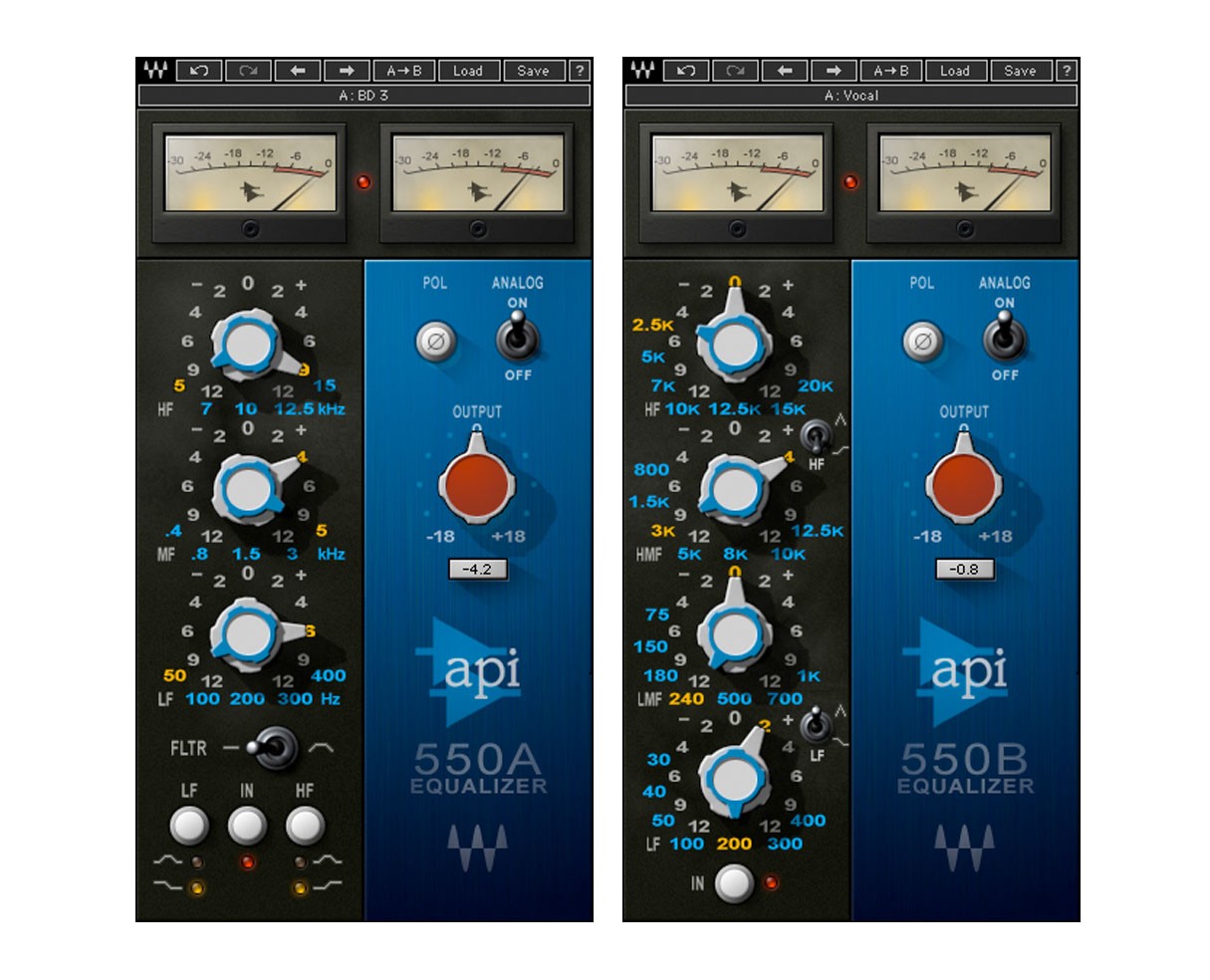
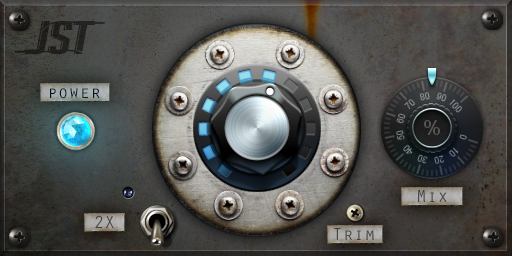
Andrew Koss-StudioAtSFL
November 30, 2017 at 5:13 pm (7 years ago)Great article. It’s only for pro-tools but Massey’s DRT deserves a spot on this list. It’s dramatically better at finding the right transients for drum replacing and then just drag and drop the midi data and trigger your Slate plugin, drumagog, or any virtual or external drum module.
You did say a drum replacer but DRT lives in its own world.
I’d also suggest Sonnox or waves Dynamic EQs. What once was only for the fortunate Weiss Mastering box, these new dynamic eqs are a dream come true!
Great job!
Matthias Miller
December 2, 2017 at 10:37 pm (7 years ago)if you are going to talk about drum plugins, you need to include transient shapers, which to much more than compressors to control the attack and sustain of drums, the tightness, or looseness of drums with the compressor pumping
Sharon
December 14, 2017 at 4:39 am (7 years ago)SSL Drumstrip – $15 until 12/15/17
JJ Jettflow
December 16, 2017 at 8:35 am (7 years ago)Forgot Oeksound Soothe. This thing is magic on drums and pretty much anything else.